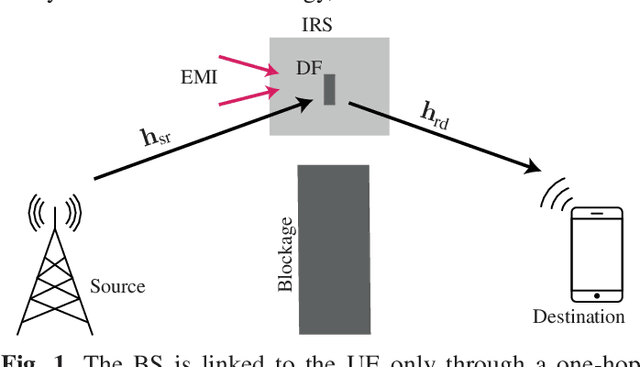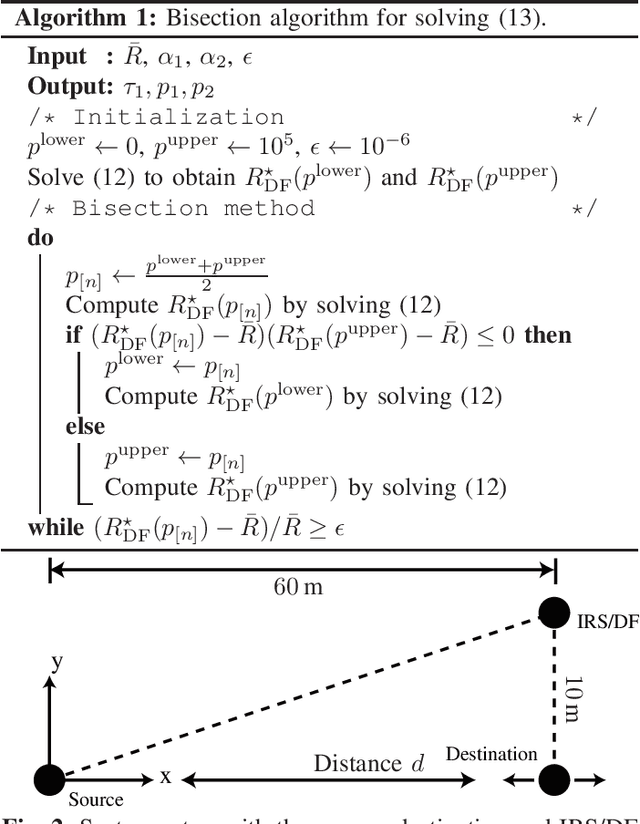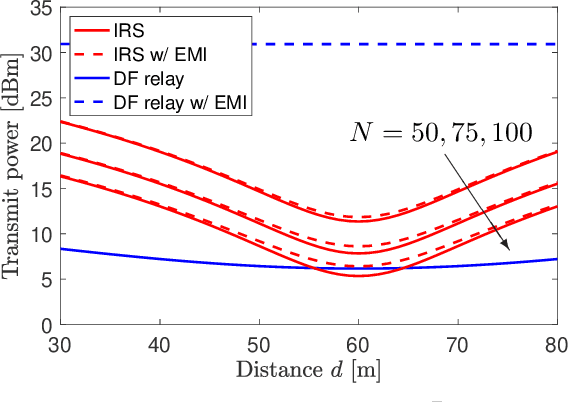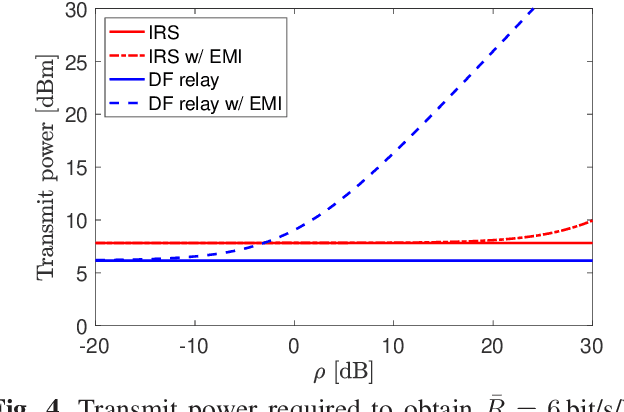Intelligent Reconfigurable Surfaces vs. Decode-and-Forward: What is the Impact of Electromagnetic Interference?
Paper and Code
Mar 15, 2022



This paper considers the use of an intelligent reconfigurable surface (IRS) to aid wireless communication systems. The main goal is to compare this emerging technology with conventional decode-and-forward (DF) relaying. Unlike prior comparisons, we assume that electromagnetic interference (EMI), consisting of incoming waves from external sources, is present at the location where the IRS or DF relay are placed. The analysis, in terms of minimizing the total transmit power, shows that EMI has a strong impact on DF relay-assisted communications, even when the relaying protocol is optimized against EMI. It turns out that IRS-aided communications is more resilient to EMI. To beat an IRS, we show that the DF relay must use multiple antennas and actively suppress the EMI by beamforming.
 Add to Chrome
Add to Chrome Add to Firefox
Add to Firefox Add to Edge
Add to Edge